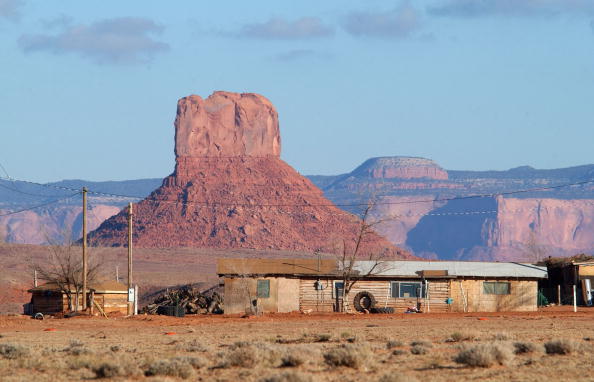When COVID-19 came to Indian Country, it spread quickly.”
So says the Albuquerque Journal, observing the exceptional threat facing Native Americans from infection by the Covid-19 coronavirus.
That threat looms over tribal lands nationwide, but nowhere so much as in the Navajo Nation, which stretches across 27,413 square miles of arid Arizona, New Mexico and Utah.
“The Navajo Nation now has the third-highest rate of cases in the United States, behind New York and New Jersey, and health care professionals anticipate the peak is yet to come,” the Journal says. “In New Mexico, more than 50% of people infected are Native American.”
An additional problem for tribal groups across the Southwest is a perennial water shortage; many families depend exclusively on trucked-in water for drinking and washing.
Neither the Navajos nor any of the nearly 600 tribal governments nationwide have yet received significant financial support from the Coronavirus Relief Fund passed in March, which — under pressure from members of Congress and others — allocated $8 billion to be split among them.
They were supposed to receive the money by the end of April, and several tribes are suing the Treasury Department to get it.
“But the delay stems in part from a dispute among the nation’s native populations, which are feuding over who is entitled to the aid,” reports the New York Times.
The dispute pits Alaska Native corporations that serve tribes in that state against tribal governments in the lower 48, who say such for-profit businesses shouldn’t be eligible for virus relief from the aid program.
A federal judge sided with the tribal governments last week, but on Friday the Treasury Department reported that it hasn’t yet determined how to allocate the money.
Meanwhile, the virus advances.
“We are so unprepared,” Tori Kitcheyan, a council member of the Winnebago Tribe of Nebraska and chairwoman of the National Indian Health Board told the Wall Street Journal in late March. “We’re like the perfect petri dish for this virus to multiply and take us out without any services or even supplies.”
The story is similar in Montana, where the Great Falls Tribune focused recently on Jolene Berrientes, a member of the Blackfeet Nation.
Berrientes’ husband Joseph, just 37, is at extreme risk from the virus because he has only one functioning lung and no spleen; the seasonal flu almost killed him two years ago.
So Verrientes takes extreme precautions, carrying disinfectant wherever she goes, wearing “outside” clothes for necessary travel and washing them as soon as she returns home.
“I can’t take a risk. It’s too scary for me,” she said. “He [Joseph] is all I have. He’s my rock.”
Back in New Mexico, Gov. Michelle Lujan Grisham ordered a short-term lockdown in the city of Gallup, just east of the Arizona state line on Interstate 40, sandwiched between the Navajo Nation to the north and the Zuni Reservation to the south.
She extended the lockdown Sunday night after Gallup’s mayor told her it was necessary “to continue the aggressive physical distancing in the community and thus mitigate transmission of Covid-19.”
Gallup is the county seat of hard-hit McKinley County, where at least 1,144 people have tested positive for the virus, nearly one-third of New Mexico’s total.



